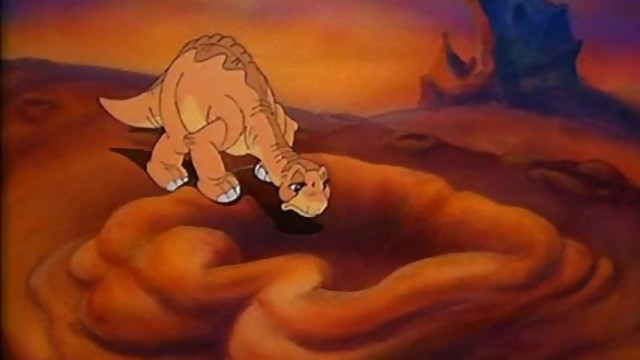 The Place called Nimh...
The Place called Nimh...
Before his departure from Disney in 1979, Don Bluth presented to executives his idea for an animated film based off of the acclaimed children's story, "Mrs. Frisby and the Rats of Nimh". But then department head Woolie Reitherman rejected the idea, citing that the studio already had Mickey Mouse and had recently made
The Rescuers. This did not deter Bluth, who's views of the studio had shifted dramatically since the start of the 1970's. Once he had started his own studio, Bluth made certain that his first feature length project would be a film based off of the book, but he decided to alter things a bit for his treatment. While the book focuses mostly on scientific aspects of the experimentation on the rats in Nimh, the movie shifted gears towards a mystical and spiritualistic style. The character of Nicodemus became something more than just the wise leader of the rats in Thorn Valley, but more of a Merlin type character.
The heart of
The Secret of Nimh is of course Mrs. Brisby (the name was changed). Unlike most animated films, which usually had a clearly definable hero with their own goals and aspirations, Mrs. Brisby simply wants to make sure her family is taken care of. As the perfect example of an everyman, we get to learn all about the mysticism and science as she does, having little knowledge about the events that occurred around her husband's death. We grow and change as she does and we get to experience things that we never would have believed ourselves experiencing.
One of the legends about Don Bluth was that he believed the notion that children could take pretty much anything you can deal with so long as you provide them with a happy ending. Bluth's early work in
Nimh and other films definitely backs up this theory as do the original animated films such as
Snow White, Bambi, and
Pinocchio. In a time when Disney was producing mostly pure children's entertainment, it's refreshing to see someone who didn't believe in this philosophy.
While
The Secret of Nimh was not a huge success at the box office, it has definitely garnered a cult following over the years and is deemed by many (including Doug Walker) as one of if not the greatest animated film of all time. It's dark and brooding, yet sincere and spiritual. And it definitely set the standard by which most animated films of the 1980's would be judged.
The Rise of Video Games...

One of the most enduring desires over time for audiences was this craving to take part in the excitement of stories and action in movies and television. Though it would be decades before we could reach the depth and meaning people find in video games, some animators wanted it to become a reality. After
Nimh, Don Bluth and his animators were hired to animate for a Laserdisc interactive game called "Dragons Lair". Taking the challenge, Bluth animated literally dozens of alternate scenes in case you chose incorrectly for a path. Throughout the game, you would have to choose pathways you wanted your hero, Dirk the Daring, to take in order to rescue the beautiful Princess Daphne. The style in a video game was unlike any other games coming out at the time (as many games had very limited hardware) and it was an immense success in both arcades and for Laserdiscs, although it has faded from obscurity since the 80's. Nevertheless, it would be a lie to say that "Dragons Lair" had no impact on the way video games are made nowadays.
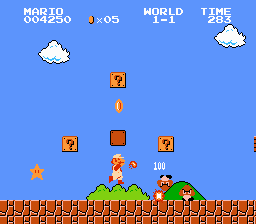
Now, I could go on a tangent about video games in the same way I could about comic books, so I won't go too much longer, but I will say that as the hardware and technology has improved, each video game developer that has remained has taken complete advantage of it. For example, you can clearly tell the difference in details between the original arcade version of Pac-Man and the original "Super Mario Bros." for the Nintendo Entertainment System. In turn, future games would improve upon the ones that preceded them, to the point where you have video games that are so immersive and realistic, you can picture their stories and actions taking place in real life. However, video games still retain the senses of wonder and fantasy that animation was best known for, especially when they create the fanciful and wondrous worlds such as those found in "Super Mario Galaxy", "Final Fantasy", and "Halo". And that is what's most important.
The Age of Commercialism

Despite the best intentions, the backlash the parental groups such as ACT faced, combined with Ronald Reagan's new regulatory measures with regards to the FCC, caused the age of commercial-free children's cartoons to end. Instead of having 2-3 seamlessly flowing hours of cartoons or educational shows, now the shows were being sponsored by toy and snack companies and children were now being shown things for the first time: commercials. The sudden boom of toy sales for many products made wealthy men into incredibly rich entrepreneurs. Products such as G.I. Joe, the Care Bears, Barbie, and Super Mario Bros. were flying off of store shelves at a record pace and convinced more and more people that commercials were essential in making the big bucks. Virtually anything made in the 1980's was turned into a cartoon for children and no company was left behind in those regards. Disney created easily marketable shows such as "The Adventures of the Gummi Bears" and "The Wuzzles", while Nintendo released multiple shows based off of their video games, including three reiterations of "The Super Mario Bros Super Show", "The Legend of Zelda", and "Captain N: The Game Master".
New strange and odd children's shows such as "Teenage Mutant Ninja Turtles", "The Care Bears", "Alvin and the Chipmunks", among others now had all kinds of merchandising and product placement surrounding them, not just stopping at toys. Clothing, movies, appliances, and many other things were being sold to squeeze every last drop out of a product. Never again would something never be marketed only as much as one felt was necessary. Now, everything would be marketed until there was nothing to take out of it and these products would fade until resurfacing decades later. Unfortunately, most of these shows lacked severely in quality and were often only memorable from the products we had.
The First Floor

Many in the motion picture industry were curious to see how far Disney could actually fall. A mediocre opening for the Epcot center in Walt Disney World, combined with massive commercial failures in the theater industry were causing many to question if there was in fact a bottom for how low the once cherished company could sink. But the layers of woe and misery surrounding Walt Disney Productions are so numerous and so thick, it should make one wonder whether or not talking about it is worth it.
For almost fifteen years, the studio was in the works on an animated film they were convinced would win them back audiences in droves and garner the respect and acclaim of all of Hollywood. Based off of the immensely popular "Chronicles of Prydain" fantasy book series,
The Black Cauldron had all of the potential of a Disney Classic. It had a deep storyline, brilliant characters, and dark yet thought provoking themes. One would have to try exponentially hard to make a bad film out of the potential in the series.
Well...in steps the remnants of the Old Guard. Spearheading the animation department since the Nine Old Men retired or passed away, Joe Hale, Ted Berman and Richard Rich were in charge of developing this film. But instead of looking back to their own history, these animators looked to the success of films like
Star Wars and
Raiders of the Lost Ark to better emulate their films. They wanted to create visually masterful films while ignoring what Disney was best known for: their characters. Bland and uninteresting characters, cherry-picking elements from the series to show, and focusing more on appealing to an audience who's long avoided Disney films (since even when Walt was alive), doomed
The Black Cauldron long before it's premiere in the Summer of 1985.

With the animation department teetering and a weak and flimsy head of the company, Walt's nephew Roy E. Disney assumed control of the company from in-law Ron Miller and brought in big Hollywood executives Michael Eisner and Frank Wells to run the company and turn around their fortunes. Eisner, in turn, would bring his longtime friend and ally Jeffery Katzenberg to the company and tasked him with rescuing the fledgling animation department. Katzenberg had no knowledge or interest in animation at first and ran the department as if it were just part of the studio and nothing more. His constant wars with the Old Guard resulted in their departures from the studio, one by one. Katzenberg and Disney wanted to hear more from the younger guys and less from these holdovers.
Katzenberg personally edited much of the film himself, including cutting out many graphic and dark scenes not at all acceptable for a children's film. Despite his best efforts, the film was virtually unsalvagable and was sent out to theaters, where it earned barely half of it's immense production costs. The film faded into obscurity and was not released or mentioned by many in the company until 1998, when it finally received it's first release to video. To add insult to injury, the film was beat out at the box office in 1985 by "The Care Bears Movie". As Master Shifu said in
Kung Fu Panda: "There is now a Level Zero".
Despite the immense failure of the film,
The Black Cauldron is notably the first animated film in the company's history to utilize computers to animate certain objects and spectacles in the film. While it didn't take complete advantage of the new tool, it certainly helped pave the way for the future of the industry.
Of Mice and Rats/Cats
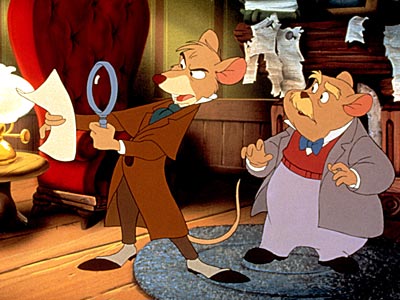
With little prospects for the animation department and more interest in promoting the live action industry, the new team made the difficult decision to move the entire department (which now comprised mostly of new recruits), off the lot Walt had built forty years earlier and into a warehouse in Glendale. This depressed many of the animators and signaled to them the beginning of the end. But this was not the case. Management felt that the group had become too complacent with where they were and had to be turned in the right direction. This would begin with altering much of the way business was done within the company. No longer would due dates be glossed over. No longer would budgets be ignored. The failure of
The Black Cauldron opened many eyes in management. This problem needed to be dealt with. Solving the problem began with Jeffery Katzenberg and Michael Eisner being shown the preliminary story boards for the group's next animated film, based off of a series of books written by Eve Titus. The stories followed two little mice who went on adventures similar to Sherlock Holmes. Neither Eisner nor Katzenberg knew much, if anything, about animation and were skeptical about the process in general. Despite this, they knew it would be wasting money to pay these animators for doing nothing, so they allowed the film to be made, provided they could animate within a strict budget.
Around this time, Roy Disney hired Peter Schneider to help run the animation department, while Jeffery would run the studio. Schneider's goal was to motivate the animators to harness their love for animation into a money-fueling weapon they could prime to help the studio rebound after fifteen years of mediocrity. He picked apart hallowed traditions and refused to acknowledge the old adage "What would Walt have done?", leaving no stone un-turned in his complete overhaul. When the marketing department believed that "Basil of Baker Street" was a difficult name to sell to people, Peter sent out a memo renaming the film,
The Great Mouse Detective. Though the animators rebelled, they knew it wouldn't end up with them winning as it had during Walt's time. The name stuck, but the product remained unchanged.
The Great Mouse Detective returned to the roots of the studio. The film focuses on it's characters and showing them off to us. The spectacle was far less important than it had been with
The Black Cauldron. While the songs were not yet brilliant and the animation is inconsistent, the characters and story are well written and gripping enough to keep children's attention. The film was released July 2nd, 1986 to warm reception and was a modest success at the box office. While this was most certainly a confidence boosting film, what pride the animators had would still take a few gut punches in mid 1980's.

Having thoroughly enjoyed watching
The Secret of Nimh, one of Hollywood's biggest directors was convinced that Don Bluth was the next big thing in animation. Joining forces with Bluth, the duo set out to work on their own movie starring mice. Only this one would cover most of the darker themes Bluth was best known for and would be far more successful than anyone had anticipated.
An American Tail would displace
The Jungle Book as the most successful animated film of all time (not counting for inflation). The story followed a family of Russian mice immigrating to America to escape persecution from cats (they believed that America was a cat-free paradise). But the family loses their son Fievel on the journey, causing the little mouse to search all of New York for them. Along the way, he encounters many colorful characters and helps other mice children battle the cats that seek to disrupt their new lives.
Influenced by the earlier work of Disney, Spielberg insisted on having the animation more closely resemble the Golden Age over the more rigged and stylized animation that was popular at the time. This resulted in giving our main character a more cuddly appearance to go along with his sweet naivete. It also added plenty of depth to each frame of animation, something no animated film since the 1950's could claim. It had more charm and warmth to it than it's rival mouse film had and immediately resonated with people the same way films like
Snow White and
Cinderella had decades past. Bluth may actually have been the next Walt Disney, at least that was what people looked at at the time. And thus did the age of Bluth v. Disney begin, with the first blow going into the pocket of Bluth.
A Boy Named Goku...

Anime was not quite ready to take the full leap in America it would take in the 1990's, but in Japan meanwhile, a new anime had begun to take the entire country by storm. Based on the manga written by Akira Toriyama, "Dragonball" follows the many adventures of an abnormally strong boy named Goku, including searching for his missing grandfather, fighting many high powered enemies and seeking out the almighty Dragonballs, seven orange balls with stars in them that when brought together, could grant the user any wish they wanted. Along the way, Goku would meet life long friends in Bulma, Krillin, Chi Chi, Master Roshi, Tien Shinhan, Chiaotzu, and many others, and would battle many great fearsome enemies. The show is a very polarizing one and took time to develop the millions of fans it has developed here in America. Nevertheless, failure to acknowledge this show would be a detriment to the list, as it did premiere in Japan in the 1980's. It, along with "Sailor Moon", would be the driving forces behind the boom in anime here in America, but it would need a little more help in the 1990's...
The Crime of the Century...
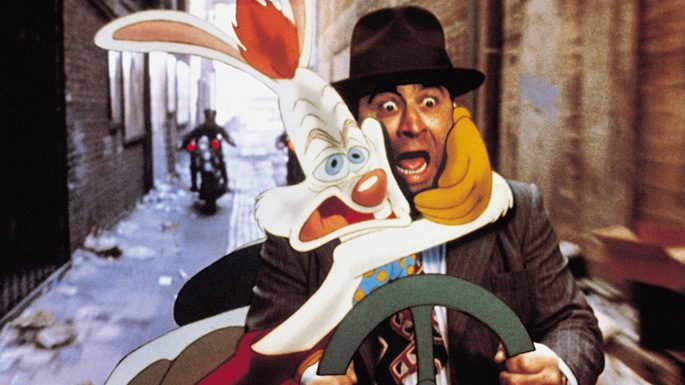
There is a specific reason why I cited both Don Bluth and Richard Williams in previous pages of this essay. Don Bluth's hiring of Steven Spielberg would prove to be beneficial for another project, ironically being funded by the company he was competing with. And despite the modest success of
The Great Mouse Detective, no one in the world had much faith in Disney's animation department. This is why Touchstone Studios, Steven Spielberg, and director Robert Zemeckis hired Richard Williams and a studio or highly trained animators to animate what many considered the biggest undertaking in animation since
Sleeping Beauty. Based on a novel with a similar name,
Who Framed Roger Rabbit would have animation and live action interactions that Walt would have dreamed about having in the 1940's. An assortment of classic cartoon characters including Betty Boop, Woody Woodpecker, Mickey Mouse, Mr. Toad, Donald Duck, Tweety, Daffy Duck, Donald Duck, Dumbo, and many more would all star alongside a rabbit named Roger in a case of mistaken identity alongside Bob Hoskins as detective Eddie Valiant and Christopher Lloyd as the sinister Judge Doom.
The film was a huge undertaking that required years of fine tuning. It required eclipsing the boundaries Walt had set when
Song of the South and
Mary Poppins had been made and integrating the animation and live actors and sets far more fluidly and delicately. It required blending the art styles of all of the previous Golden Age animation giants (including Fleischer, Avery, Jones, and Disney) into one set form that everyone could relate to. It required Warner Bros. and Disney to put aside their differences and have Bugs Bunny and Mickey Mouse interact with one another on the same screen (which is a genius idea BTW). Lastly, it would require intensive care to detail and could not have been pulled off by any other team.
Who Framed Roger Rabbit cost a staggering $58 million dollars to produce, becoming the most expensive film ever to make. Production issues and heated tension filled arguments between the creative team and management would delay the film until it's premiere in the summer of 1988. Despite all of the hardships endured, the film was an immeasurable accomplishment in the history of animation and was critically acclaimed upon initial release. To add on to the great success, the film grossed nearly $330 million dollars worldwide and won three Academy Awards for Sound, Editing, and Visual Effects.
But the most important thing about the success of the film was how much attention it brought to the medium. Once again, animation was being talked about as though it were mainstream and not just childish things. All of the misery and woes endured in the 1970's and early 1980's were now being erased with constantly growing successes in the medium, paving the way for a triumphant future...
Round 2

However, as
Roger Rabbit drew to a close, the focus now came on to the lead animation filmmakers doing battle in theaters for the 1988 Holiday season. Both films would be stepping stones in how the next age of animation would play off.
Oliver and Company had been in the works for the Disney studio for years. The tone of the film shifted multiple times, from a serious re-telling of Charles Dickens "Oliver Twist", into the final project we know it as today. The film loosely follows the exploits of an orphaned kitten named Oliver who has run ins with a gang of dogs led by the Dodger and a bum named Fagin, until finally finding home with a little girl named Jenny. The film was a first for many things for the studio. It was the first time the studio had attempted a film set in modern times since
One Hundred and One Dalmatians. It was also the first to incorporate a cast of well known actors since
The Jungle Book, hiring the likes of Bette Midler, Cheech Marin, Dom Deluise, and the immortal Billy Joel (in his only non-biographical film). The film was also the first to utilize a new computer system in it's animation. Disney had struck a deal with a fledgling company to utilize their computers to help animate their films and create minor elements. Elements animated included the smog and smoke covered skies above New York City and Fagin's scooter. This fledgling animation company would eventually become one of the titans of the industry. But for now, they were Disney's secret weapon.
If
Oliver and Company taught the industry anything, it was that Disney could market their animated films as well as their live action films. Commercialized tie-ins, record sales, and arguably the catchiest Disney song since "I Wanna Be Like You" helped cultivate the film's success in America. The film grossed $51 million dollars domestically, becoming the most successful film by domestic gross. Critical reaction was mixed, at best, unfortunately. The film was said to lack the wonder that other films had and basically showed Disney that they still needed to work harder to regain the fans they'd had years ago. To make matters worse, it lost the critical and ultimately the commercial wars to Don Bluth, who would force Disney to rethink how they made their films.
Released the exact same weekend as
Oliver and Company was the sweeping animated epic by Don Bluth, Steven Spielberg, and George Lucas.
The Land Before Time was made as Bluth's answer to
Bambi. The story followed the adventures of five young dinosaurs trying to avoid extinction and find the legendary Great Valley. The film dealt with issues that, like
An American Tail, had not been dealt with in animated films since the Golden Age. The themes of life, death, and the values of working together were added to a story with great child acting performances and stunningly realistic animation. The fighting scenes in the film were based off of the famous "Rite of Spring" sequence in
Fantasia, which attempted to replicate dinosaurs as realistically as possible.
Many nowadays look at
The Land Before Time as the more Disney-esque film in comparison to
Oliver and Company. The film followed the successful formulas of past Disney works while continually contributing enough of Bluth into the film to make it accessible to as many generations as the former company could. The film was a resounding success at the box office, earning northwards of $85 million dollars at the box office, resulting in it displacing
An American Tail as the most successful animated film of all time.
Bluth and Disney's bouts at the box office did not end after 1988. No, the two animation titans would clash again the following November. But this time, a new champion would be declared. For the Disney Studios was about to break free of the restrictive strains of past works and reclaim the glory they had lost long ago, with a re-telling of a classic fairy tale about a mermaid who dreamed to walk among the humans...
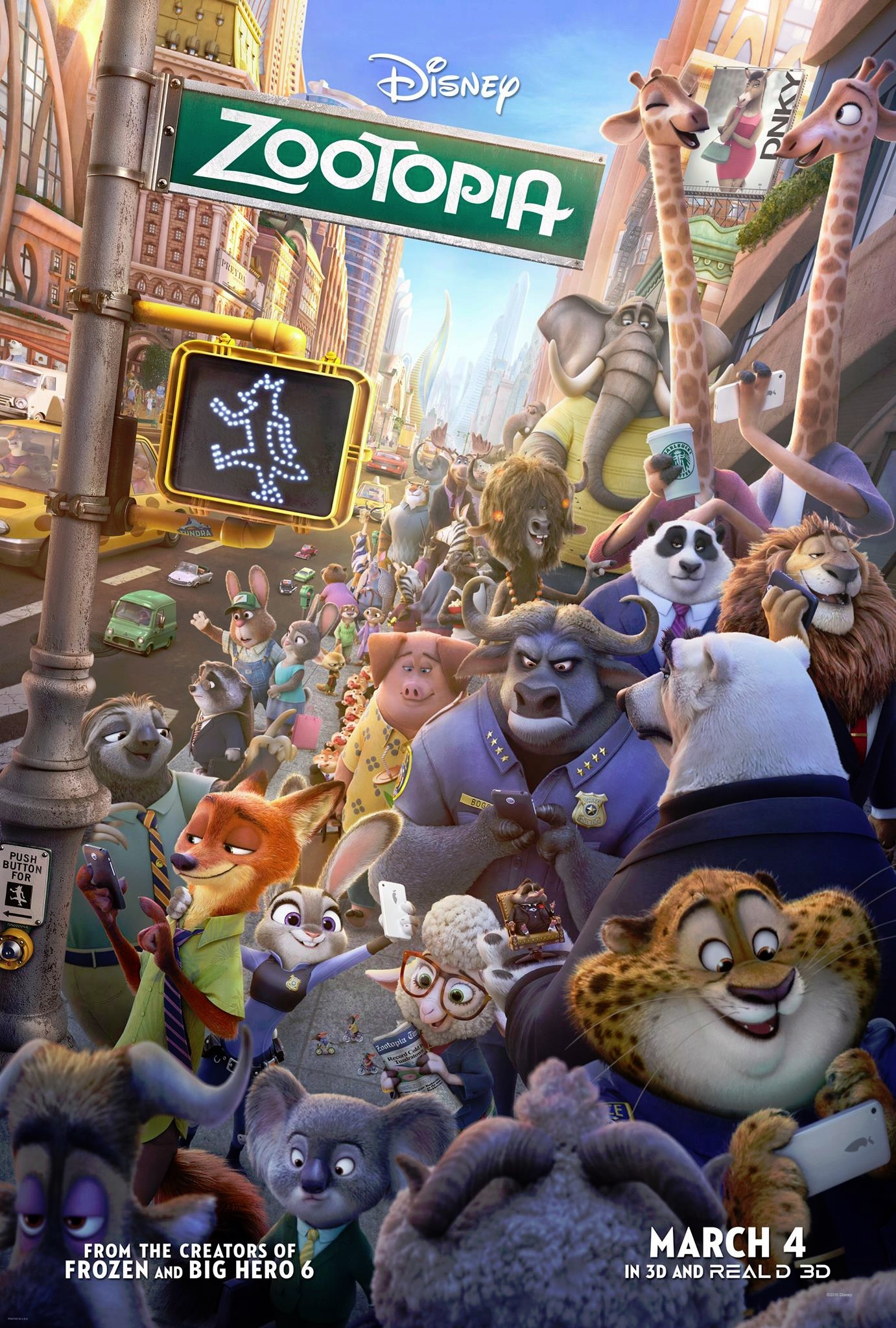 After Big Hero 6 underwhelmed me the same way many were underwhelmed by Pocahontas, my expectations for Disney's next animated film were relatively middling. I figured the film could either be another classic for the studio, or another "meh" film that would prove to me once and for all that Frozen was another Lilo and Stitch, a blue moon surrounded by clouds of good and bad. I am willing to say I went into this film with a surprisingly low amount of gusto when compared to previous films and by keeping my expectations low, I figured I would enjoy myself regardless of the film's quality.
After Big Hero 6 underwhelmed me the same way many were underwhelmed by Pocahontas, my expectations for Disney's next animated film were relatively middling. I figured the film could either be another classic for the studio, or another "meh" film that would prove to me once and for all that Frozen was another Lilo and Stitch, a blue moon surrounded by clouds of good and bad. I am willing to say I went into this film with a surprisingly low amount of gusto when compared to previous films and by keeping my expectations low, I figured I would enjoy myself regardless of the film's quality. 










